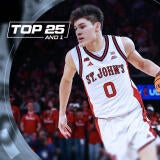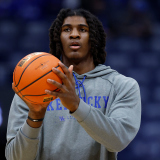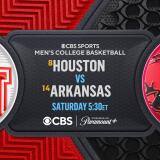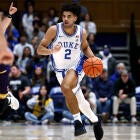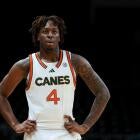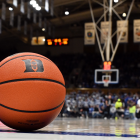Late NBA Draft decisions create awkward situations as college basketball teams begin early workouts
Next week's deadline for players to withdraw from the NBA Draft comes after college programs began 2020-21 workouts
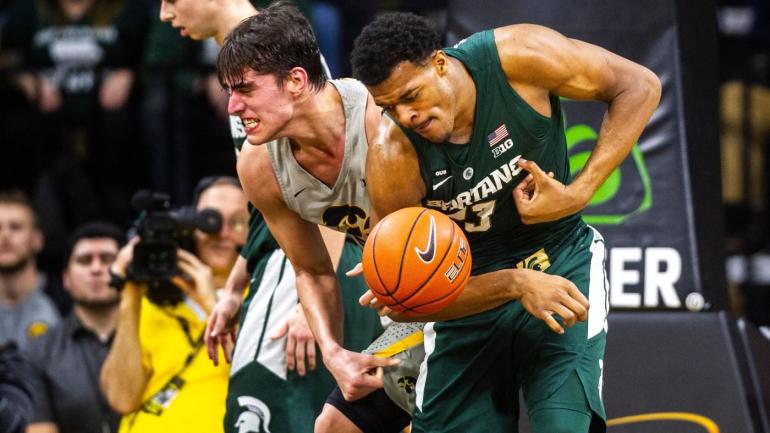
By this time last year, college basketball coaches had known for at least two months whether they would be losing any underclassmen to the NBA Draft, and many underclassmen who decided to turn pro were more than two weeks removed from playing in the NBA Summer League with their new teams.
The basketball calendar had flipped to a new season, and departing underclassmen and their former college programs had moved on as a new academic semester dawned.
But as August arrives this time around, some programs are -- to a certain degree -- living simultaneously in last season and next season as a critical date approaches in a basketball timeline turned upside down by the COVID-19 pandemic.
Monday is the deadline for underclassmen to withdraw their names from consideration for the NBA Draft. But the date is coming two weeks after programs were allowed to begin conducting eight hours per week of basketball activity and more than two months after last year's deadline.
The uniqueness of 2020 has left some players who are exploring the predraft process with a decision to make: should they participate in the eight hours per week of team activities even though they haven't announced whether they are returning to school?
"This is a unique situation because you've never gone into July and basically the beginning of August like this," Baylor coach Scott Drew said. "For our team, Jared Butler will be working out with us this week, and for as long as he has to make his decision, even if he goes all the way up until the final hour, he's always welcome to work with us."
Drew's highly-touted Bears received good news this week when point guard MaCio Teague withdrew from draft consideration to return to school for his senior season. But they are still awaiting final word on Butler, a shooting guard who led the team in scoring last season.
The program is welcoming Butler to workouts with open arms, though as a consensus top-50 player in the draft class he could opt to remain in the draft.
"It's just always been that way, after each season if people are testing the waters, they've always been allowed to do workouts," Drew said. "And if they don't want to do workouts at that point, some of them have chosen not to. But they know we'll work them out with the team, individually, anything we can do to help them, we're always going to do."
Top 10 players yet to make NBA Draft decisions
| Big Board ranking | Player | School | Prediction |
|---|---|---|---|
| 20 | Tyrell Terry | Stanford | Will stay in |
| 26 | Xavier Tillman | Michigan State | Will stay in |
| 38 | Jared Butler | Baylor | Will come back |
| 49 | Trendon Watford | LSU | Will come back |
| 50 | Isaiah Joe | Arkansas | Will come back |
| 55 | Ayo Dosumnu | Illinois | Will stay in |
| 66 | Corey Kispert | Gonzaga | Will come back |
| 97 | Luka Garza | Iowa | Will come back |
| NR | Remy Martin | Arizona State | Will come back |
| NR | Chris Smith | UCLA | Will come back |
The major difference, of course, is that usually when players work out with their college programs while going through the NBA's pre-draft process, they are doing so in April and early May -- before freshmen and transfers arrive on campus to help usher in a new season. This time around, draft prospects are working out with their college programs alongside newcomers as coaches get their first looks at next season's roster in action.
But not all potential underclassmen draftees are working with their college programs, including some who might ultimately decide they need to return to college. It's an approach Tennessee coach Rick Barnes warned against.
"I think when guys do that, when they put their name in the draft and they disengage from their team but it doesn't work out, I think that puts them in a really tough situation," Barnes said. "It almost makes it too hard for them to come back, because they've acted like they're out of here. So it's just not good to disengage. The whole point of the process is you get information. But you don't give up what you've got going."
Tennessee's Yves Pons has embraced the approach of staying in tune with his college program. The 2020 SEC Defensive Player of the Year is regarded by some media outlets as a potential second-round draft pick. But he opted to join the Volunteers when they resumed workouts, even though he has not withdrawn his name from the draft.
"Normally, it happens earlier," Barnes said. "Grant Williams did the same thing. When he went through the process, he continued to workout with us, do everything with the team. He did not want to disengage from our program."
Williams ultimately decided to stay in the draft last year and became the 22nd overall pick. The Volunteers also lost point guard Jordan Bone to the draft last season as an underclassman and carried an open scholarship into the season before using it to bring in mid-year enrollee Santiago Vescovi.
The delay to this year's draft withdrawal date will make filling any scholarships that open unexpectedly because of players entering the draft even more challenging than it would be in a normal year.
"This is obviously not ideal from the standpoint of if someone does decide to go pro, it's hard to replace them," Drew said. "It's hard to replace a scholarship this late in the process.
"At the same time, we've never gone through a pandemic before either. We have to look out for our teams, but at the same time, we want to make sure our former players have every chance to be successful as well. But I understand this is a tough year as far as some schools that have multiple guys still on the fence."


